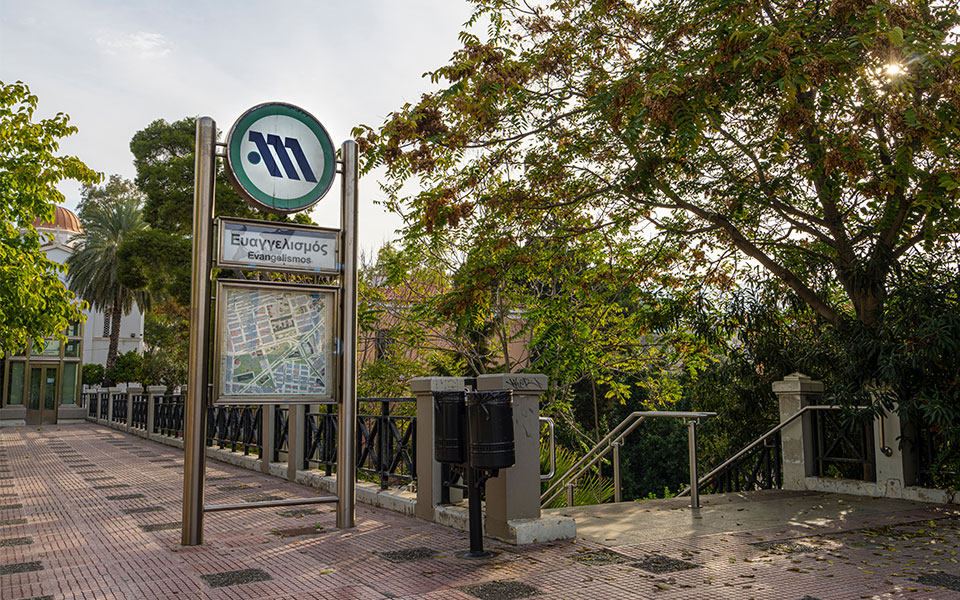Evangelismos station on the Athens Metro (between Syntagma and Megaro Moussikis stations on the blue line) is a great stopping point to visit several of the city’s key cultural attractions, all within a few minutes walk from the upscale inner city neighborhood of Kolonaki.
Upon emerging from Evangelismos station, which has several exits (one on each side of Vasilissis Sofias Avenue and one leading through to Rizari Street), you’ll find yourself on busy avenues, but within a brief stroll in either direction you can visit several museums, parks and one of the city’s most important under-the-radar archaeological sites. Here we list the best places to go to from this metro station.
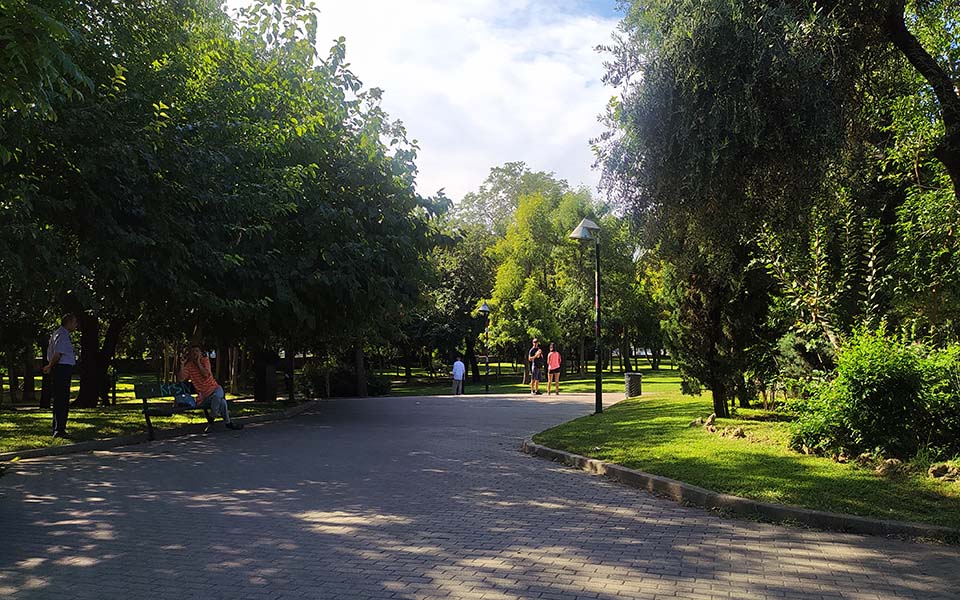
© Alexia Amvrazi
Rizari Park
Donated in 1844 to the Greek state by Georgos Rizaris, a member of the Filiki Etairia (a cultural association created during the fight for national independence), this 15,000 square meter park may be between two busy avenues but its abundance of Mediterranean plants and trees offer a sense of respite from the urban frenzy.
Opened in 2010, the park is where one arrives when emerging from the bottom exit of the Evangelismos station. People come here to walk their dogs, relax on a bench, or see one of the art installations that are periodically presented here.
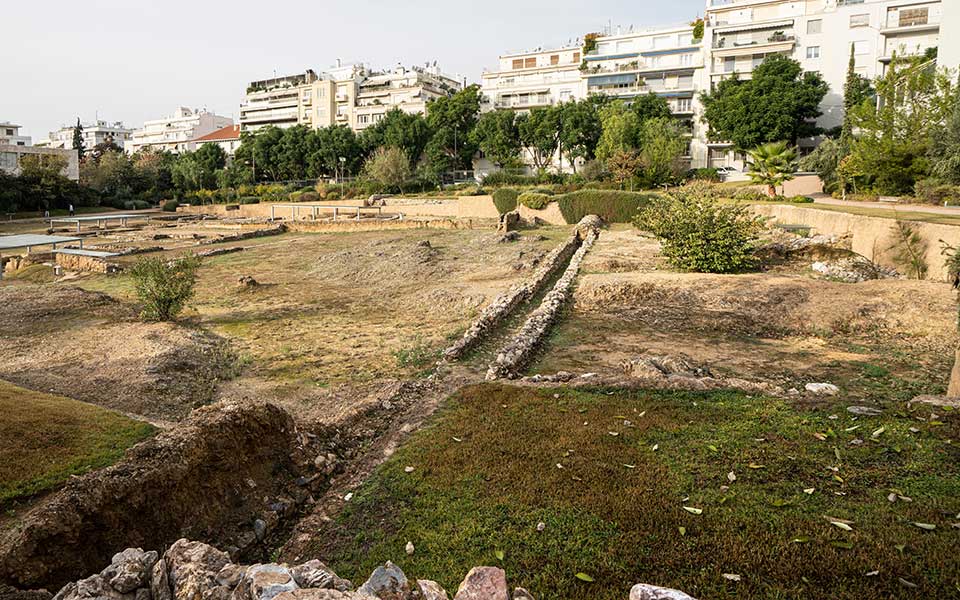
© Shutterstock
Aristotle’s Lyceum
Aristotle’s Lyceum, unearthed in 1996 during works on the park behind the Hellenic Parliament, lies behind the War Museum and the Byzantine and Christian Museum. It’s ruins are next to Vas. Sofias Avenue on the right of Evangelismos station’s top exit.
Founded in 335 BC by the philosopher Aristotle, one-time personal tutor of Alexander the Great, this is where young men partook in athletic and academic activities. Today, one can see the palestra (unearthed in 2011) and the knee-high remains of several buildings. Modelled on Plato’s Academy, the lyceum was the very first institutions of higher learning where youth were introduced to Aristotle’s progressive scientific teachings. Philosophy, mathematics, ethics, politics, metaphysics and rhetoric were all practiced here, even after Aristotle fled Athens in 324/323 BC (due to his Macedonian connections).
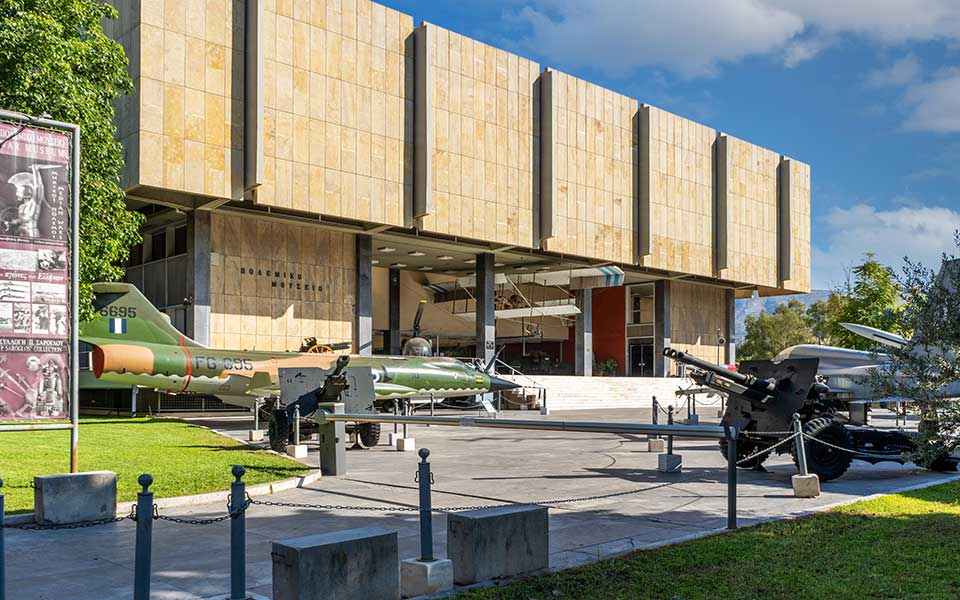
© Shutterstock
The War Museum
Built in 1972 by the Ministry of National Defense on the site of a longstanding artillery camp, this Bauhaus style building houses thousands of rare weapons, artillery pieces, an impressive array of aircraft in the front courtyard, historical documents, and photographic and cinematic archives attesting to Greece’s military history.
It is the largest museum of military history in the country and one of the largest in southeast Europe. Included among its permanent collection is the extensive weapons collection of Petros Saroglos, who gathered items from around the world. The War Museum also has branches in Thessaloniki, Hania (Crete), Nafplion and Tripoli.
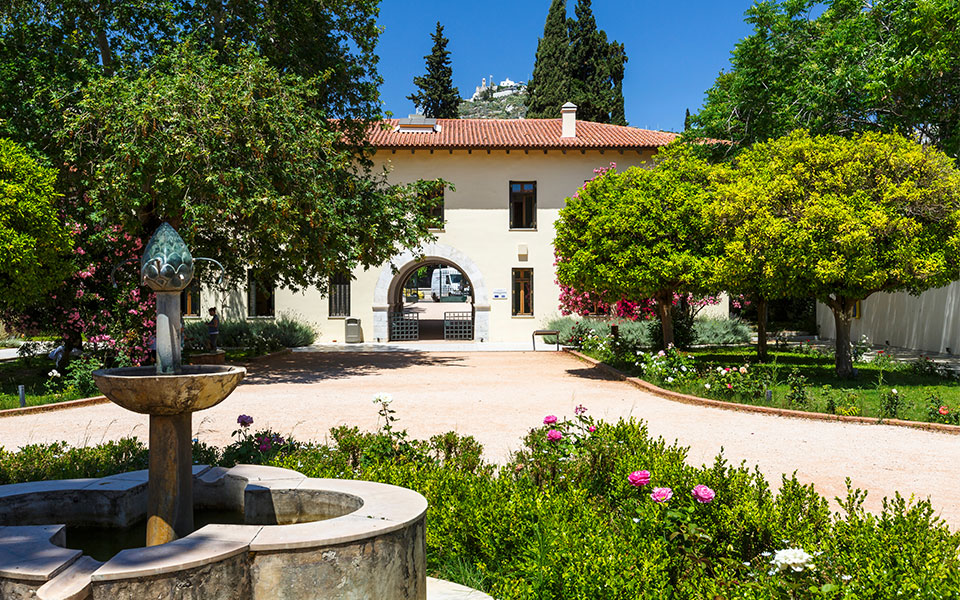
© Shutterstock
The Byzantine and Christian Museum
Housed in the beautiful Villa Ilisia, once the winter palace of the Duchess of Plaisance, with a lovely garden and courtyard where one can visit the on-site café (without the purchase a ticket), this museum houses over 25,000 artifacts from the Early Christian, Byzantine, Medieval, Post-Byzantine and later periods.
The items exhibited have been gathered from around the Greek world, including priceless religious icons and manuscripts, while the museum library houses over 15,000 books on Byzantine archaeology and art. The museum also presents temporary exhibitions by contemporary artists.
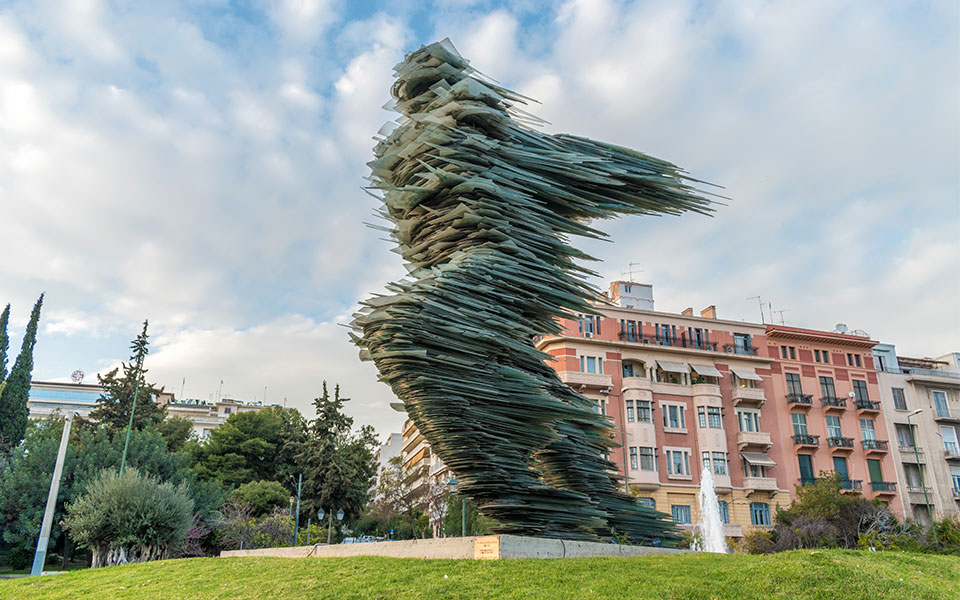
© Shutterstock
Turning Right on the Vas. Sofias Exit
“The Runner” Sculpture
Often seen in photos of Athens since 1994 when it was erected, “The Runner” (“O Dromeas”) stands tall on the busy intersection of Vas. Sofias and Vas. Konstandinou Avenues. Created by Costas Varotsos, who stacked thousands of sheets of glass to create the eight meter high sculpture, the artwork was actually first erected in Omonia square.
Fun fact: the sculpture, which caused quite a bit of controversy because of its conspicuous modernity when it was first erected, was originally named “The Stranger” (“O Xenos”) by Varotsos, for whom the work represented the foreigners who came and went through Omonia square. Its current name came from the impressions of the wider public, who named it such because of its s-stance (running pose) as if racing through a finishing line.
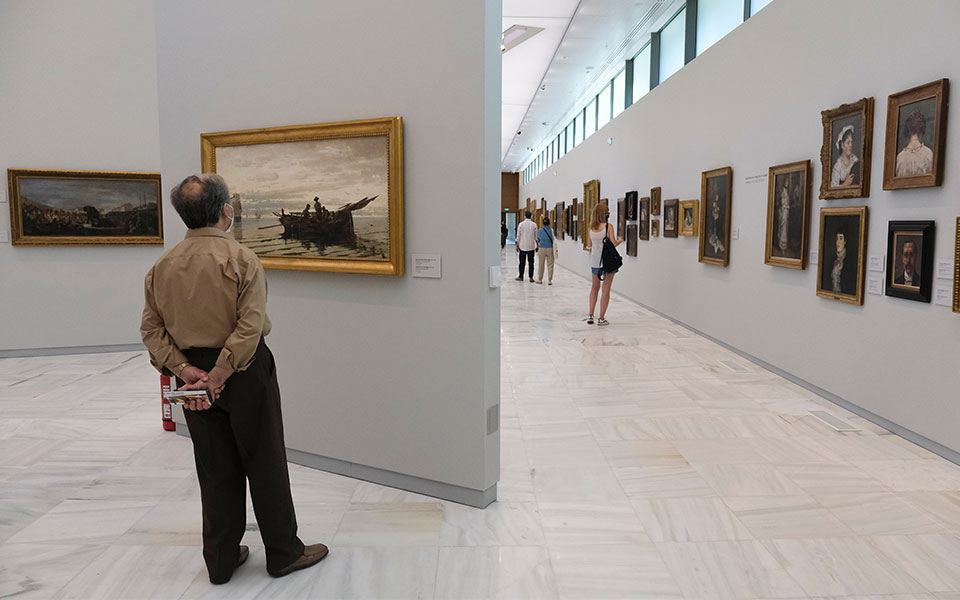
© Shutterstock
The National Gallery
Athenians waited a long time for the return of the National Gallery – Alexandros Soutsos Museum, which disappeared behind construction walls while it was under renovation from 2013 to 2021. But it was well worth the wait, as the original (9,270 square meter) building, constructed in 1976, has now been more than doubled in size to 20,760 meters, offering ample space for some 20,000 artworks to be displayed.
The impressively grandiose and modern glass and metal building showcases a permanent collection of Greek and international paintings, drawings, sculptures, installations and art objects spanning from 1490 until 2010 that offer visitors a comprehensive view of Greek art history. Several temporary exhibitions are also presented.
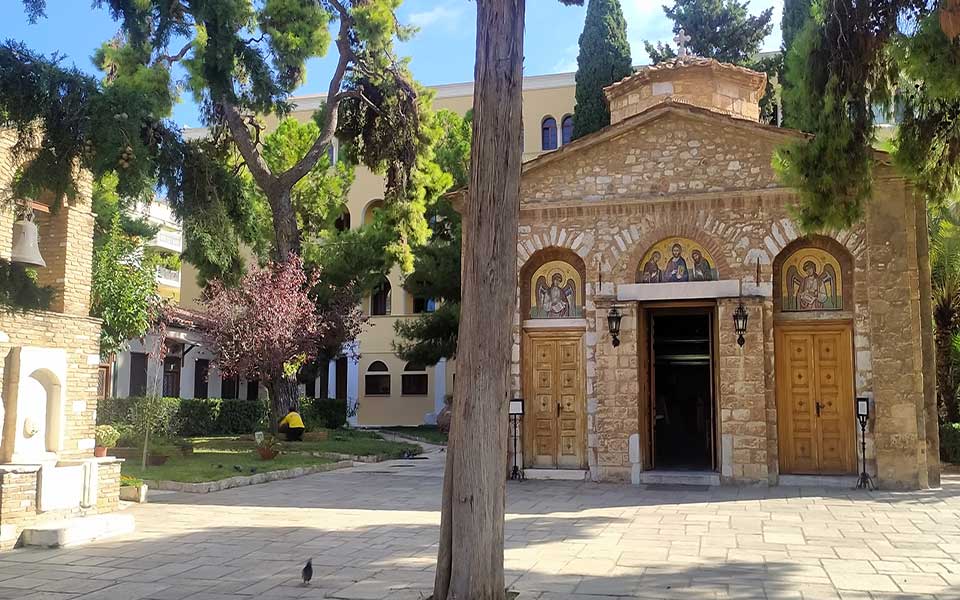
© Alexia Amvrazi
Crossing over on Vasilissis Sofias or the Upper Exit
Petraki Monastery
The 1000-year-old Byzantine Petraki Monastery offers a pleasant escape from the busy city center. Renewed to its current appearance in 1673 by Parthenios Petrakis, a monk and physician, it was developed throughout the centuries with the addition of monk’s cells and gardens, which are maintained by approximately 20 resident priests, archimandrites, deacons and novices who serve the Holy Archdiocese of Athens.
The monastery welcomes visitors throughout the day.
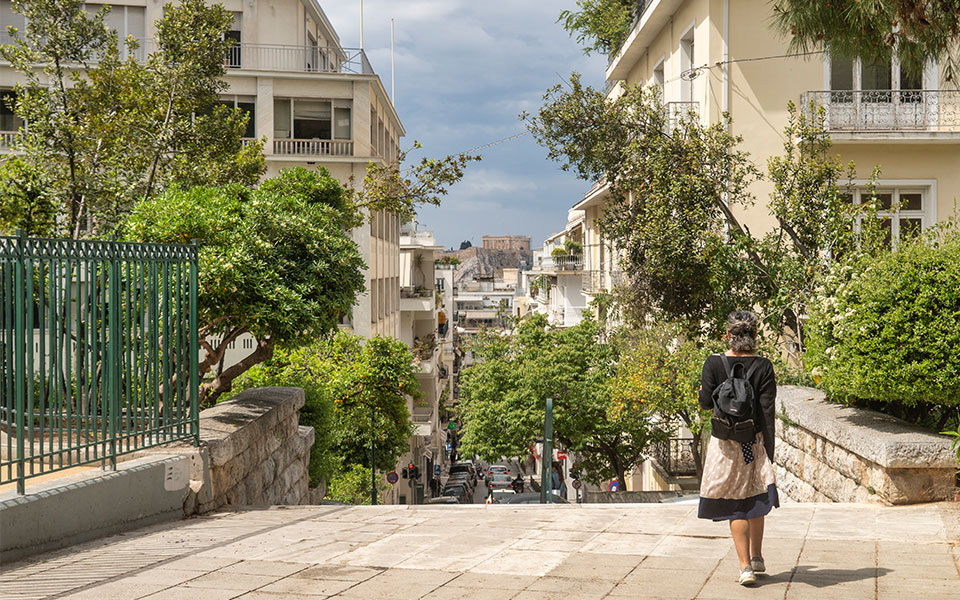
© Perikles Merakos
Kolonaki
Kolonaki is an area packed with excellent boutique shops selling everything from food products, cosmetics and home décor items to jewelry, books and antiques, as well as a multitude of places to eat and drink and two cinemas. It can be reached within less than 10 minutes walk uphill from Evangelismos station.
The metro station itself is named after Evangelismos General Hospital, which is just a few short minutes walk up Marasli Street. Marasli is lined with an assortment of cafes, bakeries, souvlaki and sandwich shops, and pharmacies. Walking up the street you’ll pass hoards of doctors, nurses and other medical staff on their break from the hospital. Marasli is one of three parallel roads leading from Vas. Sofias Ave up to the center of Kolonaki. The other two are Ploutarchou Street, where there is the British Embassy and a little further up several quaint cafes, restaurants, a post office and a few stores, and Loukianou Street, where you’ll also find cafes, bars and shops.
These three streets lead up to Patriarchou Ioakim Street, which is where Kolonaki square is located. From Xenokratous Street, which is a little further uphill, these roads turn into stairs that lead to Aristippou Street at the very top of Kolonaki, where you’ll find the Lycabettus cable car (at the end of Ploutarchou) and the steps leading hikers up the hill (at the end of Loukianou Street).

